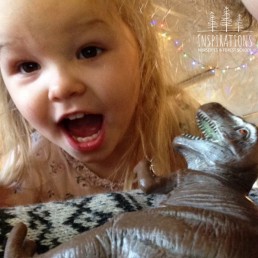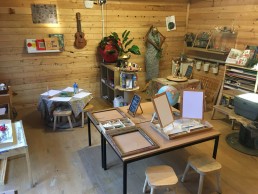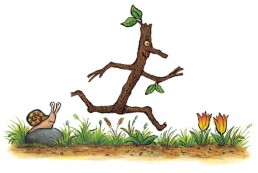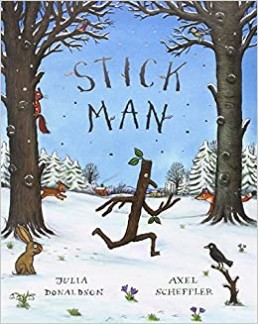Being Two
This Month we are focusing on our middle room at nursery, the toddler room, also known as our Honeybees room. Being two is more commonly referred to as the ‘Dreaded Twos’ or ‘Terrible Twos’; a term we find very unjust and instead celebrate this age with the phrase ‘Terrific Twos'.
Terrific Twos
It is very easy to conclude that your Toddler is in the midst of the ‘Terrible two’s’ when they act up and try push your buttons, especially when you are faced with patience testing tantrums.
It is important to remember that they are experiencing so many emotions and ultimately navigating their way into becoming tiny humans. They do not mean to drive you to the bottle of wine sat in your fridge, they are just growing and learning whilst showing you who they are and that being two really is terrific.
Adventure and Independence
In our eyes being a two year-old is about adventure and independence, traits we
feel are continuing to shape them after the transition from Baby to Toddler.

The Toddler room, or the Honeybee’s room as we refer to it is set up to allow the above,
and is a large area both indoors and out to move around freely, with many areas of
provision to explore and investigate. Whilst these areas are being slowly destroyed by tiny
hands and feet, friendships are being formed, and language is continuing to develop by
using simple sentences to share feelings, experiences and thoughts. They become more
aware of others feelings, and they are starting to understand boundaries and routines, as
well as listening with interest and understanding simple questions.
Milestones - Potty Training
Being Two also comes with it's challenges and a certain milestone is often met during this
period of their lives… Potty Training! Early signs that they may be transitioning
to this stage include awareness and communication. From telling you that they have done
something in their nappy to expressing the urge to go, these are all clear indictors that the
time is right and you should go with it and know that we are always their to support you. Remember that children develop at their own pace and they may not be ready to be potty trained until later.

Here are some links to books and tips for support-
https://www.amazon.co.uk/s?k=potty+training+books+for+toddlers&crid=BLJ3UFJL3K9O&sprefix=potty+training+%2Caps%2C192&ref=nb_sb_ss_ts-doa-p_3_15


Children are not things to be moulded, but people to be unfolded- Jess Lair
Next week we will focus on the importance of schemas, with some tips to supporting young children's language development. In the meantime if you've had a tough day, you've passed bath time and skipped straight to bedtime, you're still doing a great job. Remember it is this age that children are making new connections in their brain, pushing boundaries and learning vocabulary at rapid speed. We have to give credit to them for all this multitasking, whilst keeping our silliness alive, reigniting our imagination, and providing daily entertainment.
Although there can be some hard times amongst the great times if we start to see the world through their perspective we might all agree that life as a toddler can be challenging but also very fun.
-Ashleigh
The Art Studio
Every morning and afternoon our Pre-Schoolers choose where they want to spend their time, between the Yurt/Outdoor Classroom, Forest School or the Art Studio. There is a quaint pebbled path that leads us behind the Yurt, past the new pond and up to this purpose built creative space, but this isn't just any art classroom, we do things a little differently here. http://simonr30.sg-host.com/the-art-room/
Why do we have an Art Studio?
Of course creativity is woven throughout every aspect of our learning at Inspirations, there are mark making tools, paints and clay accessible in all areas, so why do we need an additional separate creative space? The Art Studio, (referred to as an Atelier in the Reggio culture) is so much more than just an Art Room. It is its own separate space for the children to own, re-purpose and re-visit week after week, and is set out to foster self discovery.
100 Languages of Learning
It is a space for smaller groups of children to branch off, be heard, share ideas, and develop the confidence to be leaders of their own research and learning. It is an environment that plays host to books, materials and tools that support the 100 ways of learning with the support of myself as the Atelierista. It is a space where children proceed through their inquiry to reach their hypothesis though guided experiments, mixed media, play, music, light and shadow, sculpture and dramatic play. A space for them to give meaning to, give identity to, and in turn put them selves and their ideas into context within the world they live in.








The walls of the Art Studio are a canvas, a projector screen, an art exhibition and a metaphorical mirror reflecting the evolving learning journey of our children. Through photos and quotes of the children's voice on the wall the children can see where their ideas started, where they are now, and by reading back the children's own words they see that their inputs are recorded, valued and remembered.
It's also important to note that the Atelierista is not an art teacher, rather, an Artist who knows the potential of art materials and children, and the limitless possibilities when these are combined.




Beautiful Mistakes
In the Art Studio the children are not afraid to try new things, because fear of failure doesn't exist. How can it exist in a place where mistakes are simply learning opportunities. A fallen glue pot can become an art project in its self, and a drawing gone wrong can inspire new ideas. One project that stands out began when a child wiped up spilt watercolour paint from the floor with a baby wipe and watched as the colours soaked through the wipe. He then decided to add baby wipes to a canvas, the 'dirty' baby wipes themselves then becoming the art.
Seekers of Meaning
As constant seekers of meaning, our children are making sense of the world around them with everything they do, and our Art studio is one section of our pre-school that fosters this.
This week we will be filming inside the Art Studio to see their explorations brought to life, this short film will be shared on You Tube next week.
- Nathalie
Home School Activity 3- Make Your Own Stick Man
Implementation
Resources: Sticks
Use the different sized sticks you’ve collected to make a Stick Man.
How will you join them together?
What could you use for his eyes?
Take a photograph of your Stick Man and share it with us!
Intent- Learning Objectives
Moving and Handling
22-36 months
- Shows control in holding and using jugs to pour, hammers, books and mark-making tools.
- Beginning to use three fingers
30-50 months
- Uses one-handed tools and equipment
40-60 months
- Uses simple tools to effect changes to materials.• Handles tools, objects, construction and malleable materials safely and with increasing control.
Literacy
22-36 months
- Has some favourite stories, rhymes, songs, poems or jingles
30-50 months
- Describes main story settings, events and principal characters.• Shows interest in illustrations and print in books and print in the environment.
40-60 months
- Uses vocabulary and forms of speech that are increasingly influenced by their experiences of books.• Enjoys an increasing range of books.
Being Imaginative
22-36 months
- Beginning to use representation to communicate, e.g. drawing a line and saying ‘That’s me.’
30-50 months
- Captures experiences and responses with a range of media, such as music, dance and paint and other materials or words.
40-60 months
- Creates simple representations of events, people and objects.
Exploring and using media and materials
30-50 months
- Joins construction pieces together to build and balance.• Realises tools can be used for a purpose.
40-60 months
- Understands that different media can be combined to create new effects. • Manipulates materials to achieve a planned effect.• Constructs with a purpose in mind, using a variety of resources.• Uses simple tools and techniques competently and appropriately.• Selects appropriate resources and adapts work where necessary.• Selects tools and techniques needed to shape, assemble andjoin materials they are using.
Technology
30-50 months
- Knows how to operate simple equipment, e.g. turns on CD player and uses remote control
Impact-
How did this activity go? Please use this space to record any findings, adaptions, reflections and quotes from your children. We would love you to email them back to us or share them on Tapestry, Instagram or Facebook.
Story Time- Open ended Question ideas
This applies to all books you may be reading with your children, not just stickman.
Looking at the Cover
Can you find the Front Cover?
What can you see on the front cover?
What might this book be about?
Can you find/point to the title?
What might happen in the story?
Parent can read the title and ask again what might happen.
Talk about the Author/Illustrator and any related books
Inside the Book
What is happening on this page?
Can you turn the next page?
How do you think the character feels? Why?
How would you feel?
What might happen next?
Do you know what that word means?
What might happen at the end of the story?
When Finished
Can you remember the characters in the story?
What happened in the story?
What happened to this character in the story?
What did you find out?
Did you like this book…why?
What was your favourite part?
Who was your favourite character?
Can you re-tell the story in your own words?
Do you like how the story ended?
Can you think of another way the story could have ended?
We suggest your child listens to the story with you many times over a week and is able to look at the book/video independently when chooses to. Your child will become familiar with the story, characters, depth of the story messages, rhyme and phrases, illustrations and even letter/word recognition. Hopefully they will be able to retell the story, talk in more detail about the characters and their feelings/actions, use their imagination to change parts of the story or rhyme, draw simple representations of the characters or main events, role play the story, copy words/label pictures from the story or share retelling with younger siblings.
https://www.youtube.com/watch?v=6FlKIjVeNY0&t=18s








